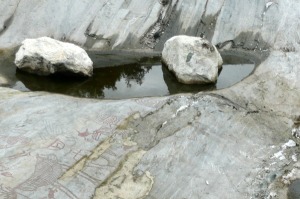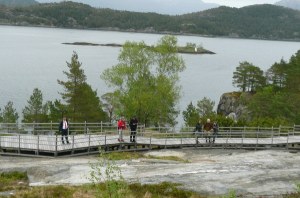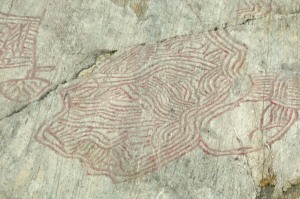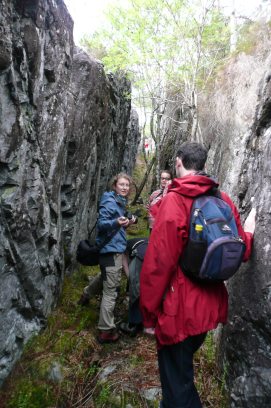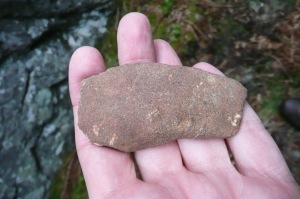Our trip began when the school bus turned up. We had to wait until after school was over and the bus had taken the children of Florø home, so our trip began around 4pm. It being near midsummer in Norway, there was still plenty of light to see sites. We drove through the stunning landscape of the Flora district to visit Ausevik.
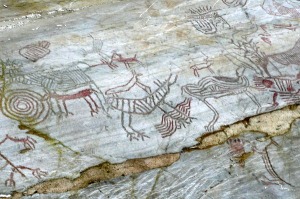
The site was excavated in the 1990s by Trond Lødøen, and was one of the first sites where rock art production activities could potentially be linked to the rock art. The site was spectacular, with a number of images of red deer (with characteristic internal decoration), and several complex abstract engravings also. Unfortunately the preservation of the site is bad as the images were carved on slate, which of course laminates really easily and is especially susceptible to frost.
I love to visit rock art sites, but the site we visited next was even better: the stone quarry at Stakaneset. As we were driving over several people gestured to a large hillside dipping into the other side of the fjord. This was the site of Stakaneset. Stakaneset is important as this is the source for the stone tools used to carved the Ausevik and Vingen images (stone pecking tools made of Stakaneset diabase stone have been excavated from these sites). We approached Stakaneset via a circuitous route, and eventually drew up in a lay-by close to the fjord’s edge. The route to the site involved skirting the edge of the fjord via a narrow ledge. Over we scrambled, and up the hillside. My legs reminded me that I had spent the last month sitting on my backside marking essays: I don’t get enough exercise. After scrambling over rough terrain and through thickets and shrub, to much whistling of the Beatles’ ‘Norwegian Wood’, we eventually reached the main attraction.
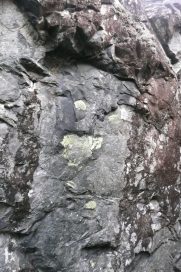
Diabase is an igneous rock that extruded into the bedrock in the geological past, the quarry consisted of an immense channel cut into the rock, most of the diabase had been quarried out leaving traces of flake scars, and in some cases evidence of fire setting, on the edges of the channel.
The depth of the quarry channel is neatly illustrated by Chris Fowler in the accompanying photo, the channel towers above him.
We continued along the channel and followed it down to the edge of the fjord. The beach was amazing as it was composed of diabase flakes, residues of stone knapping. Incredible. it was great to see this site, and to link this location with Ausevik, very close to Stakaneset, and to Vingen. The idea that this specific location had been quarried for material with which to carve rock art locations seems to underline the significance of the rock art images themselves; they are not made casually, they are executed with care, forethought and significance.
Once we’d scrambled our way back to the bus, it was time to reflect on our visit over a late supper, and to make good use of the long Norwegian days in a drink at the local bar…
Dr A
